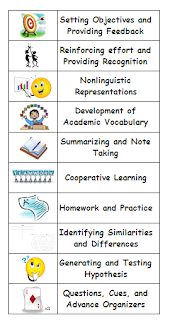
Plan, Do, Study, Act . . .
Are you part of a data-driven school? Not sure what differentiation can look like? Have your administrators been talking about utilizing the 7 Habits in the classroom? Do you need to have Continuous Classroom Improvement (CCI) or follow the Baldrige Model? Or do you just believe that communicating expectations with students is just plain important? We've been focusing the last few years on how to track learning and data in our classrooms. Here is the way I've chosen to show mine in the classroom.
Breaking down the parts, the green (reading) and purple (math) areas are two different boards helping teachers communicate with students and classroom visitors what the learning targets are for the class. The "Plan" part identifies the objective being taught at the time. These posts are usually done in kid-friendly goals and change as the lesson plans change to meet all the standards in a given grading period.
The "Do" part identifies the types of lessons the students do to learn the given objective. On this sample board the "Do"s are arranged to meet the variety of Marzano's High Yield Strategies. Adapting a fabulous idea from a colleague, I've written the activities completed on post-its underneath the labels so that I can move them or store them as we review effective lessons later. In making sure that I have activities listed under each of the categories, I know that I am reaching more of my students through a variety of methods.
An idea I am going to try next year (now that I am familiar with implementing the High Yield Strategies and can do this in my lesson planning), is to arrange the "Do"s by an adaption of Gardner's Theory of Multiple Intelligences to promote student engagement. I will use these to categorize the types of learning happening with my students and track my differentiated teaching for my diverse kiddos.
Moving down to the bottom right-hand section labeled "Study", here is where data is collected and displayed in graphs for all to see how many students were able to score proficient after completing the "Do"s for the learning target (in some classes teachers posted pre- and post-test scores to compare). The students also give feedback on the activities by completing a plus/delta t-chart after they have "Study"-ed how many gained proficiency. If using the post-it idea, it is easy to move the activities down from the "Do"s to the "Study" t-chart quickly.
Last, the students "Act" on how well they did. There is a place to have students list ideas to celebrate if they reached their goal (at our school the goal is to have all students score 80% or higher), or to give ideas for how to improve on how well they learn for the next learning targets. The reason the PDSA parts are blocked into a square is so that it resembles a continuous cycle of learning about what went well and applying it to the next target for learning.
If you're interested, I've created the posters in many fun themes (sports, space, colors) at my TpT store. Thanks for visiting!! :)




You stated that you would combine Marzano's High Yield Strategies with Marzano's High Yield Strategies in the "Do" section. How does that look? How are they combined?
ReplyDeleteHi!
DeleteI would not combine the Marzano's High Yield Strategies with Marzano's Strategies. :) I combined them with Gardner's Multiple Intelligences. Thanks for asking!